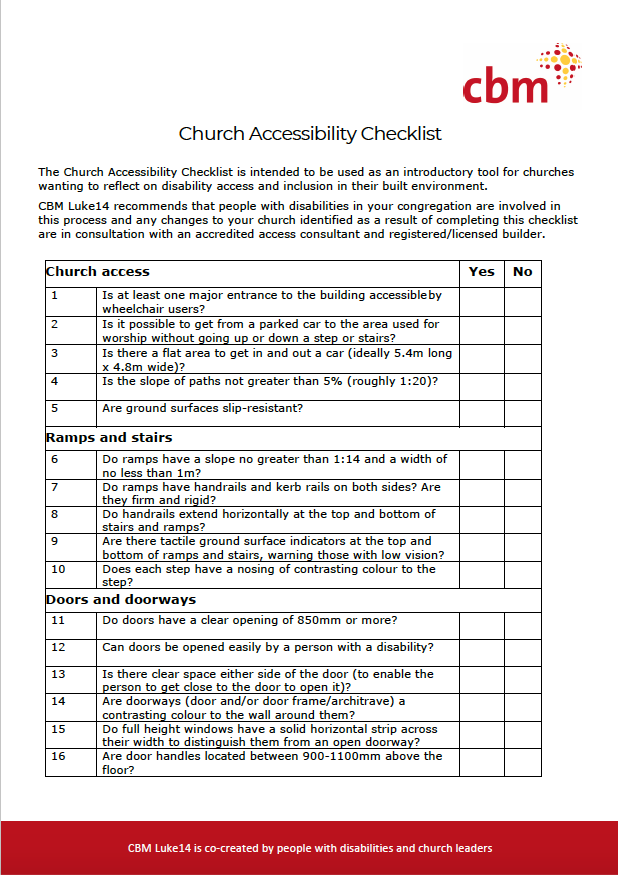
“Once, when visiting a church, I was greeted by a gentleman at the door who pointed to the corner of the church at the rear and said, ‘Come over here. This is where wheelchairs go.’ I said, ‘Oh?’ and he said, ‘Yep. This is where we’ve got to put you – out of the way. We can’t go moving pews to make room for wheelchairs. You’ve got to sit back here.’
“I was ushered to the rear corner of the church, right next to the Kids’ Corner. But that’s where wheelchairs went. Not me – wheelchairs. That’s where I sat for the whole service. At the back. At the rear. In the corner. Totally distant from the rest of the congregation. Totally separate from the whole worship service.”
– Jim Stallard, CBM
As a quadriplegic, Jim’s wheelchair was an essential part of his life – but it never defined him. Unfortunately, Jim’s experience is not an isolated one.
People with physical impairments can sometimes find it hard to access – or feel included in – church communities.
Take a moment to think now – is your church inclusive of people with physical impairments?
What are physical impairments?
‘Physical impairment’ describes many conditions where people experience difficulty when performing physical functions.
This might include:
- walking
- moving arms and legs
- controlling hands.
Physical impairments can also be experienced by people with a spinal cord injury, cerebral palsy, an amputation or any other physical condition that impacts their physical capability.
How can our building be more accessible?
There are many legal regulations and guidelines to help churches make sure their buildings are disability friendly. Find some resources to help you navigate them.
BUT, creating an accessible space is much more than ticking off the regulatory boxes. The true test of accessibility in your church is how well the features actually work for people with disabilities.
This means there is only one way to find out if your church is truly accessible… ask those who use it!
Then, work together with them to find solutions. Focus on initiatives and innovations that improve their everyday experience at church.
It’s really important that this process includes everyone who uses the spaces. When people understand why things need to be stored differently or spaces kept clear, they will be much more likely to learn – and stick to – the new ways of doing things.
Tips for inclusion beyond the building
Including people with physical disabilities is about more than just the physical environment.
The way we interact on an interpersonal level also has an enormous impact on how welcome and comfortable people with disabilities feel at church.
Some tips to help people with disabilities always feel respected include:
- Communicate at eye level where appropriate.
- Ask for their opinions and include them in programs and events.
- Never handle a mobility device unless asked to do so.
- Don’t provide assistance without asking.
- Ensure clear access is available throughout the church.
- Avoid a patronising or condescending tone.
Following regulations gives churches a good head-start when creating usable and welcoming spaces for people with physical disabilities. But this is only the start of the journey.
We need to seek the feedback and ideas of people with disabilities within our churches.
Then, together, we can build buildings – and communities – that include and value all of God’s people.
For more information
Learn more about including people with psychosocial disabilities by watching Mariska’s story about faith, disability inclusion, and the church.
